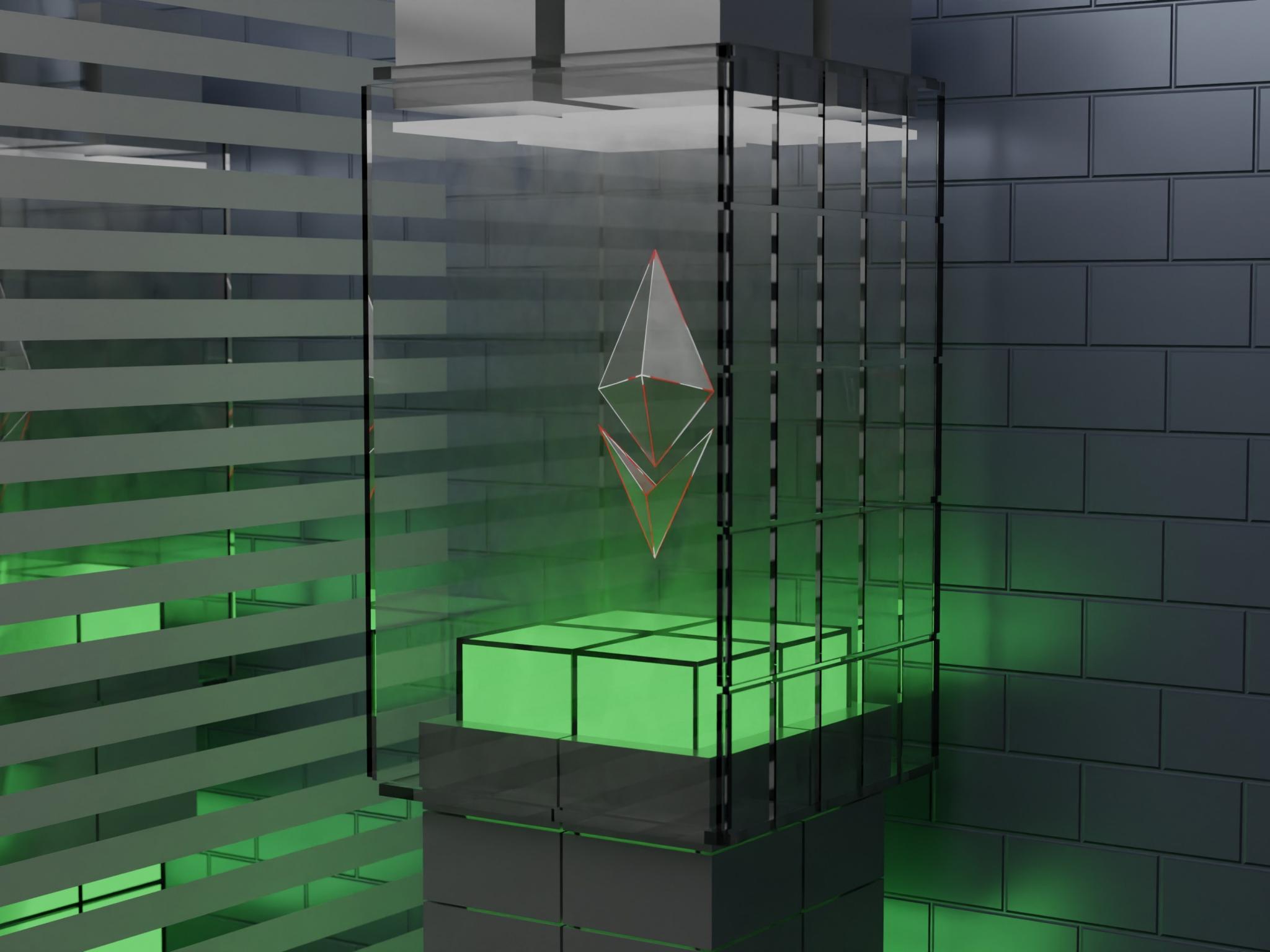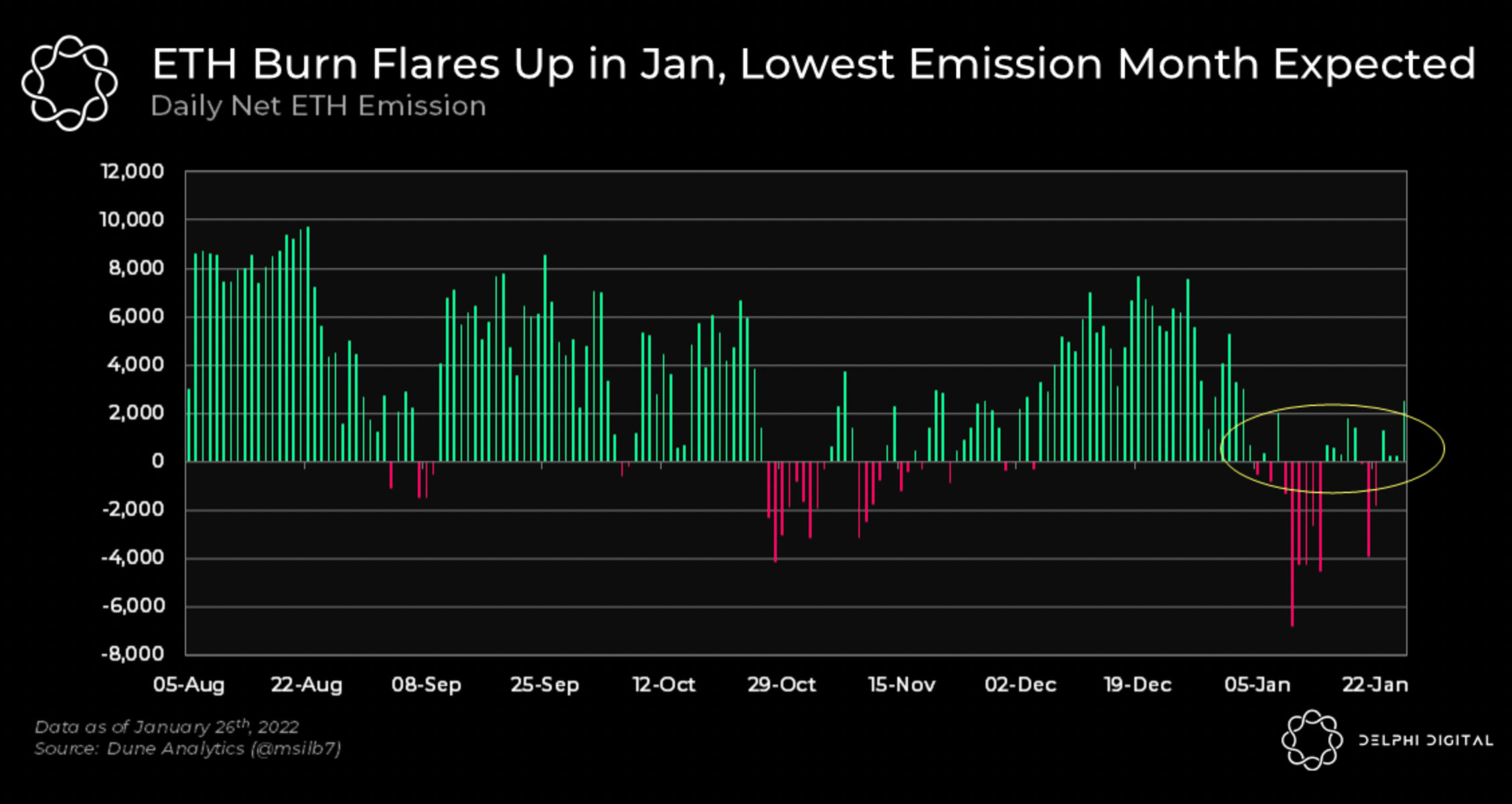
The amount of Ethereum (CRYPTO: ETH) burned soared in January leading to expectations of the lowest emission month.
What Happened: Ethereum burns rose this month resulting in the largest daily deflation of minus 6823 ETH on Jan. 10, according to Delphi Digital data.
The independent research firm wrote in a note that when January’s ETH emissions are compared to previous months — a trend of net burn is observable.

“OpenSea and NFTs played a large role in propping up transaction numbers and the volatility across crypto. In turn, this led to more token movements and swaps, further increasing this month’s burn,” said Delphi Digital.
Burning implies taking a cryptocurrency out of circulation. The process is done by sending coins to a wallet that cannot be used for transactions.
See Also: How To Buy Ethereum (ETH)
Why it Matters: January is on track to becoming the lowest ETH-emitting month since the London hard fork (EIP-1559) was initiated in August.
The hard fork included a proposal that caused a big part of ETH paid for the transaction fee to be burned.
A total of 1,659,961 ETH, worth nearly $3.94 billion, has been burned since the hard fork took place, according to data from Watch The Burn.
Even though Ethereum is seeing deflation, the price of the token has corrected 24% over the last seven days. At press time, ETH traded 3.85% lower at $2,376.59. ETH has fallen 36.7% since the year began.







